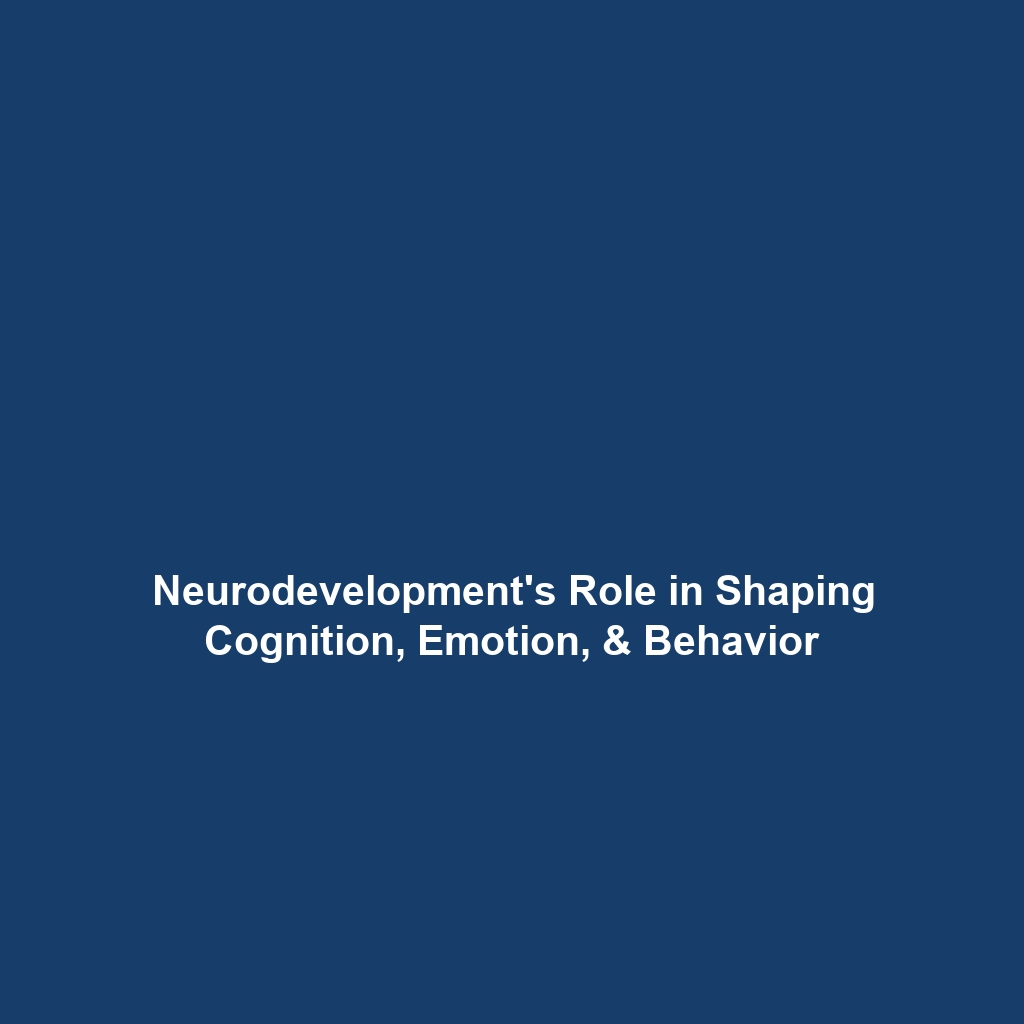Role of Genetics and Environmental Factors in Brain Development
The interplay between genetics and environmental factors, including nutrition and toxins, plays a crucial role in brain development and understanding this significance is imperative within the broader context of biomechanics. These factors influence neural growth, cognitive capabilities, and overall brain structure, shaping an individual’s potential and health outcomes. As we delve deeper into the biomechanics of brain development, we uncover how these variables contribute to both normal and atypical developmental trajectories.
Key Concepts
Several key concepts define the relationship between genetics, environmental factors, and brain development:
1. Genetics and Neurodevelopment
Genetic predispositions significantly impact brain structure and function, influencing characteristics like IQ, personality, and susceptibility to disorders.
2. Environmental Influences
Factors such as nutrition and exposure to toxins during critical periods of brain growth can alter neural development, affecting cognitive function and behavior.
3. Biomechanical Connections
Understanding the physical forces and movements involved in brain development provides insights into how mechanical factors may interact with genetic and environmental influences.
Applications and Real-World Uses
The understanding of how genetics and environmental factors impact brain development has several significant applications in biomechanics:
- How genetic insights guide prevention strategies: Identifying genetic markers can help predict risks for brain-related disorders, allowing for targeted nutritional and lifestyle interventions.
- Applications of nutrition in biomechanics: Proper dietary practices can enhance cognitive development, showcasing the synergy between biochemical processes and mechanical aspects of brain function.
- Intervention strategies for toxin exposure: Developing guidelines to mitigate toxin effects informs public health policies and protective measures for vulnerable populations.
Current Challenges
Despite advancements, the study of genetics and environmental factors in brain development faces several challenges:
- Challenges of isolating variables: The intricate nature of genetic and environmental interactions complicates the analysis of specific influences on brain development.
- Issues in longitudinal studies: Tracking developmental changes over time requires extensive resources and commitment, leading to potential gaps in data.
- Ethical considerations: Research involving genetic modification or manipulation raises ethical dilemmas that must be addressed.
Future Research and Innovations
The future of studying the role of genetics and environmental factors in brain development is promising, with innovations on the horizon:
- Breakthroughs in neurogenetics: Advances in genetic editing, such as CRISPR, hold potential for correcting genetic anomalies affecting brain development.
- Next-gen technologies in neuroimaging: Improved imaging techniques will enhance our understanding of structural brain changes related to environmental exposures.
- Personalized nutrition: Tailoring dietary interventions based on genetic profiles could maximize neurodevelopmental outcomes.
Conclusion
In summary, the roles of genetics and environmental factors in brain development are integral to the field of biomechanics. Understanding these interactions not only sheds light on neurodevelopmental health but also informs preventative and therapeutic strategies moving forward. As research progresses, it becomes increasingly important to stay informed and involved. For further reading, explore our articles on nutrition and brain health and gene-environment interactions to deepen your understanding of these critical topics.

